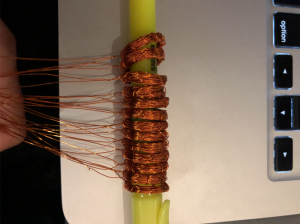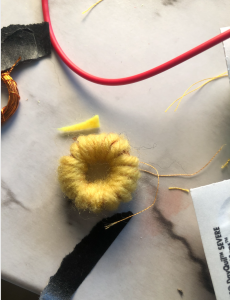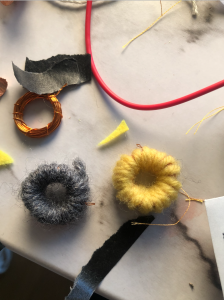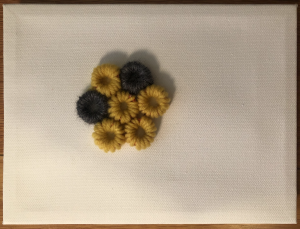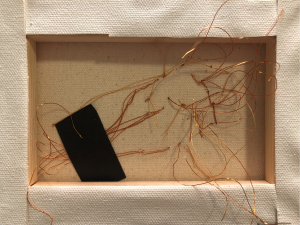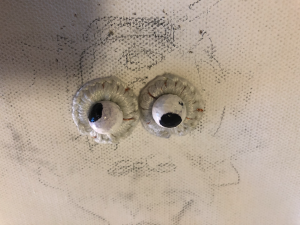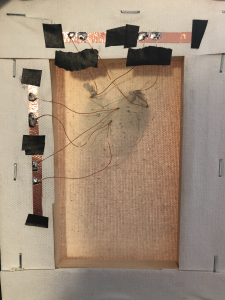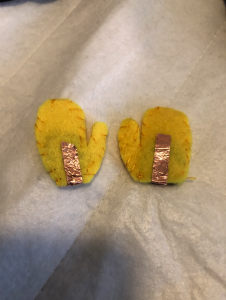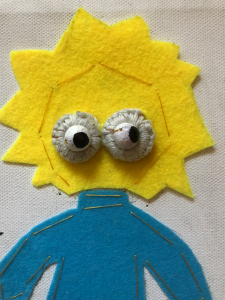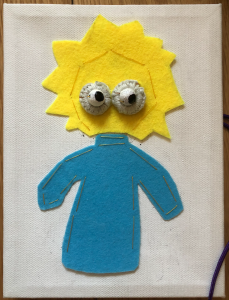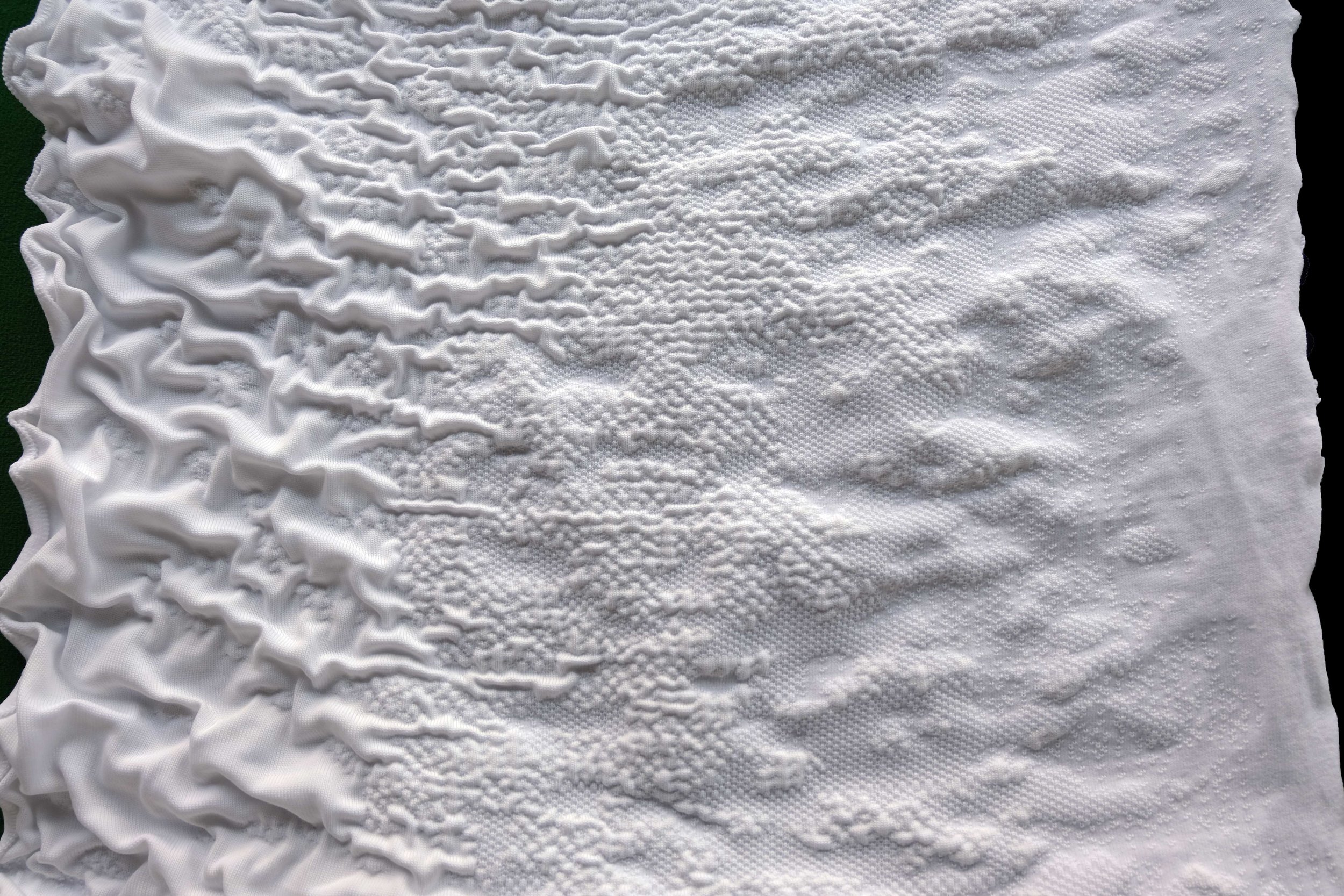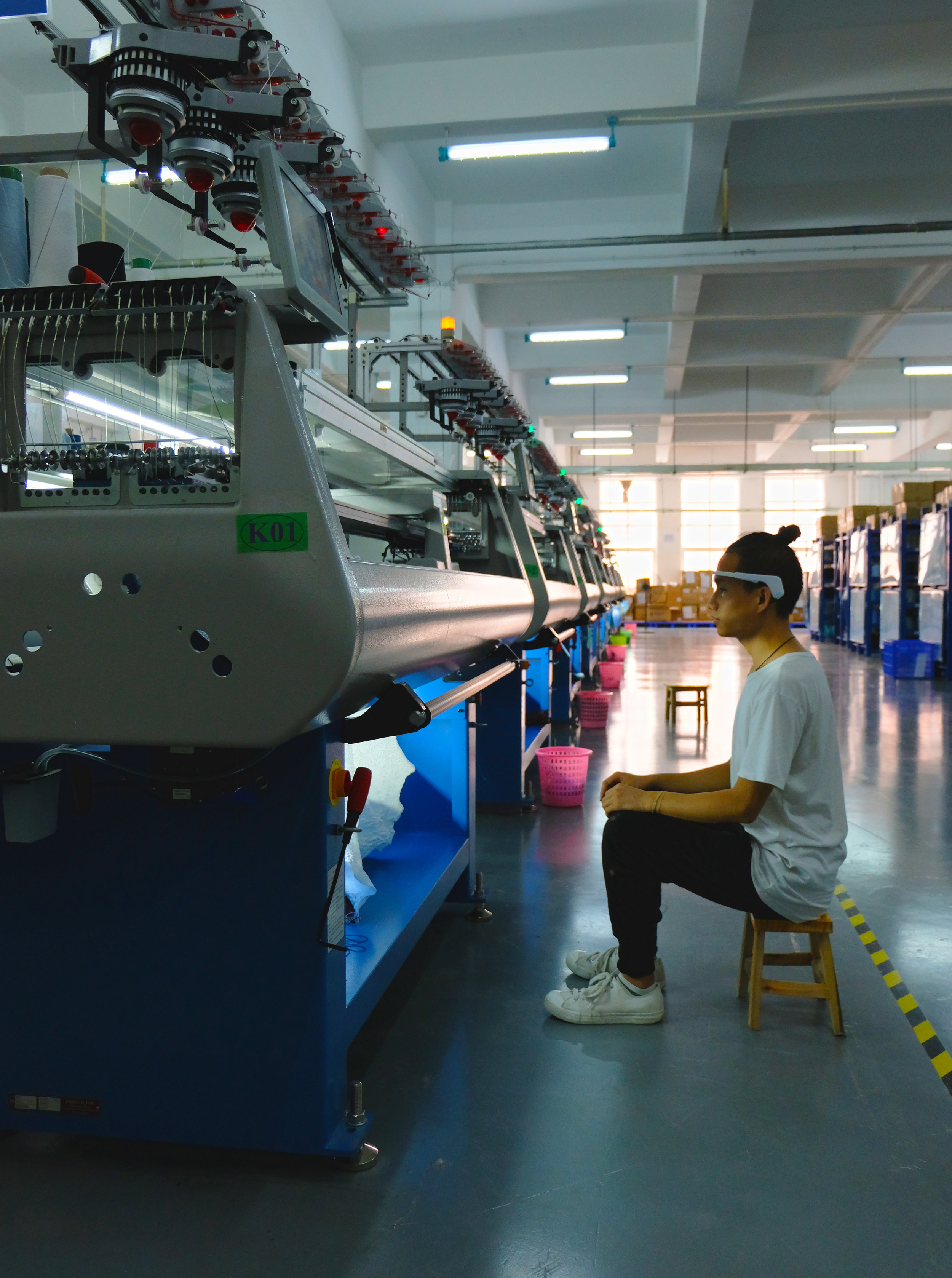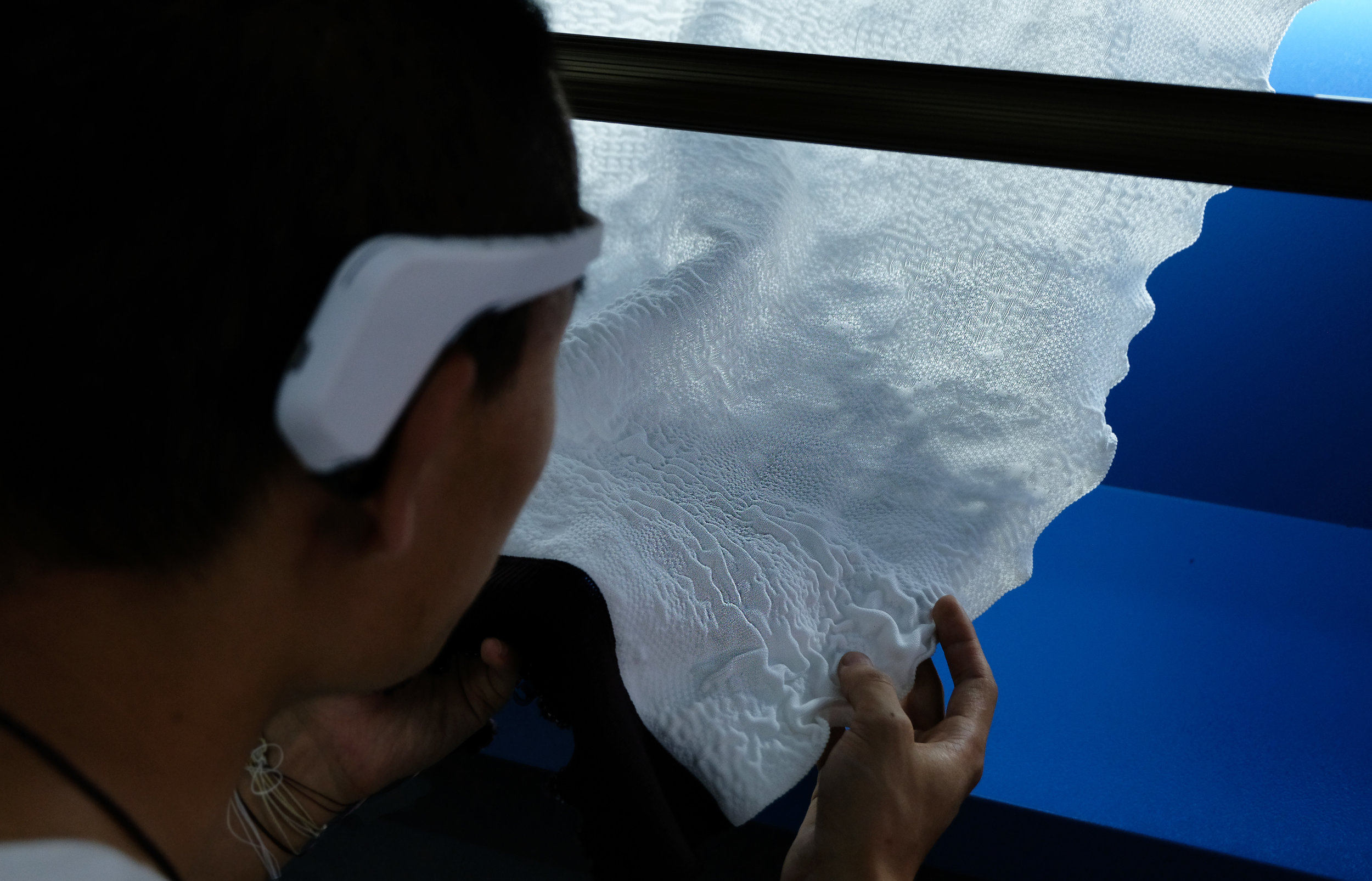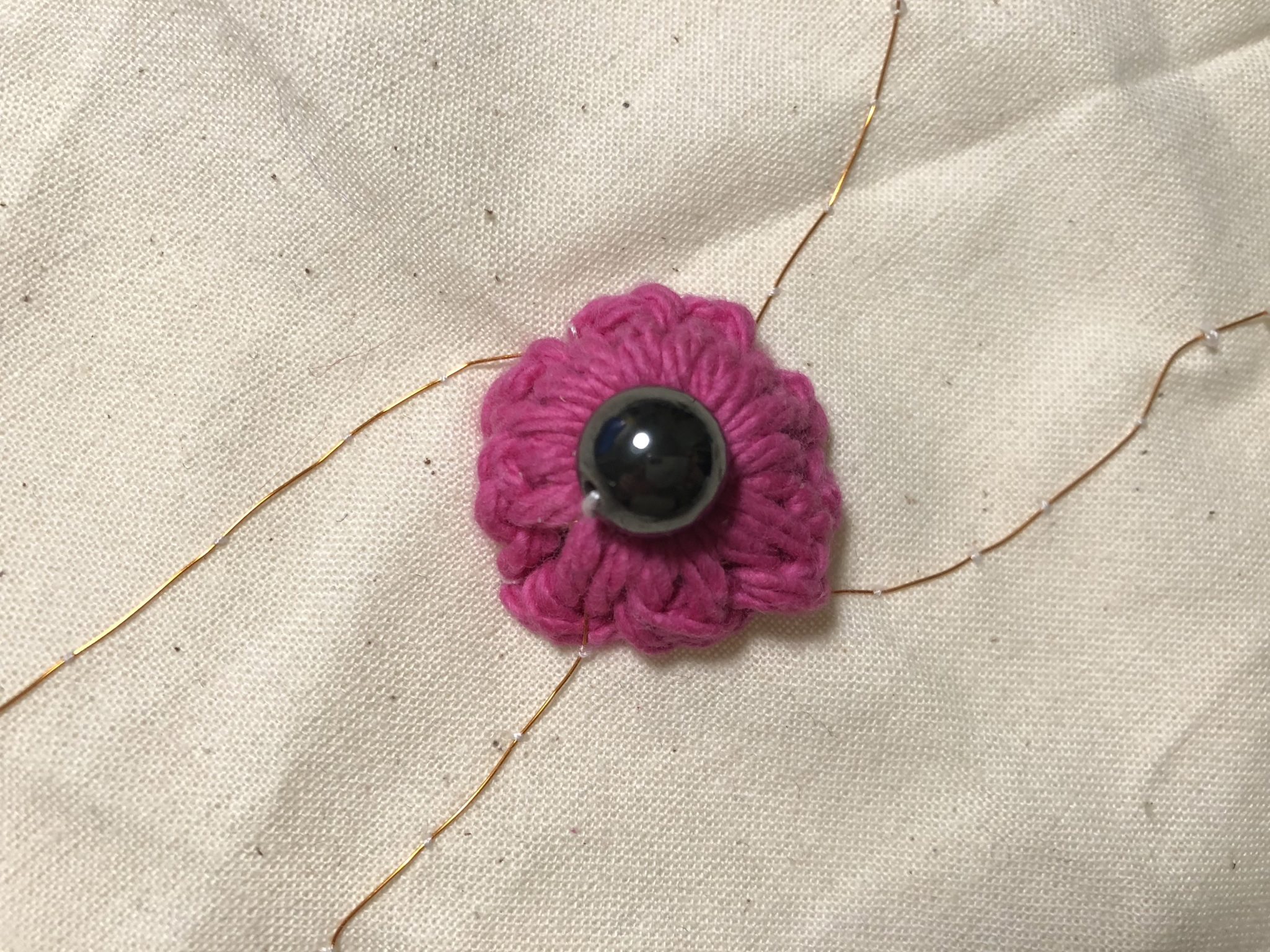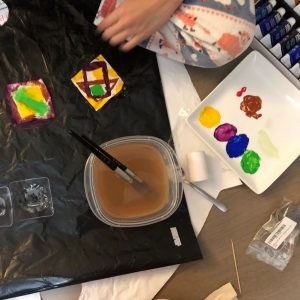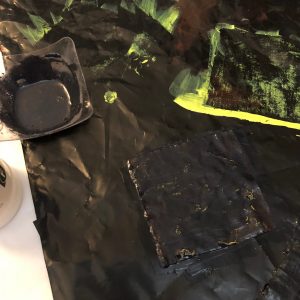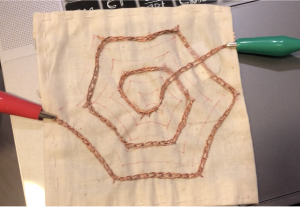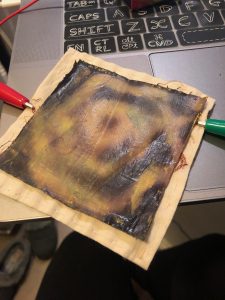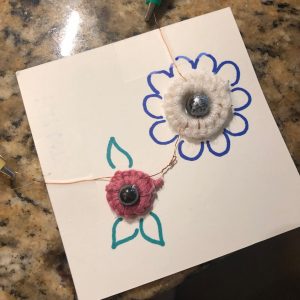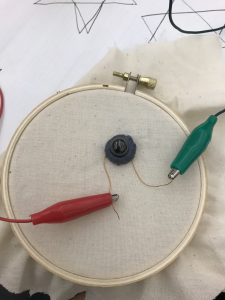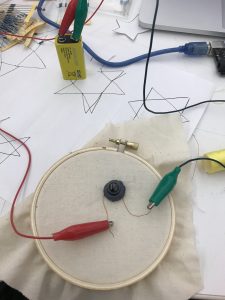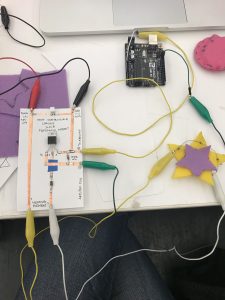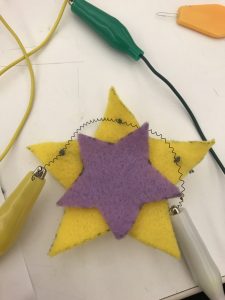Here is my link for final project on Instructables: https://www.instructables.com/id/Flip-Dots-Simpson/
In this project, I mainly focus on using flip dots. At the beginning, Im was ambitious that I intended to create a painting of a sunflower, with the central part full of flip dots, and flexinol on the edge of the petals. When talking to Liza about this idea, she told me that it is not easy to incorporate all of them. Thus, I decided to start with the flip dots since it is the one that I am most interested in.
After I started, I figured that the flip dots are not easy to deal with as what I expected before.
The first step I have done is to wrap the coil. I wrapped each coil around 50 times and I did almost 12 of them.
Next I wrapped all of them as double coils using yellow and grey yarns.
Then, I put them on the canvas like the picture below.
But after I put all the flip dots on it and connected it to the battery, I didn’t work at all. I guessed the problem was that there were too much current needed but I only have two battery to provide power. Then I started to deduct it to be more simple. I started with two coil and thinking about a way to make them interesting. Then, I used two flip dots to represent eyes as the dots flip over, it can be seen as the eyes are moving around. I was inspired by my Simpson toy and started to draw an outline of the shape.
I used white yarn to wrap the coil this time and the material is more smooth. Also, to make the flip dots like eyes, I painted the dots using gesso as the base and marker to draw the circle as the eyeballs. Then, I found that the surface was not very smooth so that I used my clear nail polish to cover the surface to make it more smooth.
Then I connected all the conductive thread at the back and solder the parts that need to be soldered. For some reasons, I checked that it is only work for either one of the coils but not for both.
Thus, the little gloves that I prepared as the switches for the double coil has not been used in this case.
Above are the pictures and video of the final piece. I really enjoyed the making process. The most important thing I learnt in making this is that there is always something that we didn’t expected at the beginning. We should learn from what we failed before and become more familiar with the materials or the process. Overall, I am satisfied in what I created.
